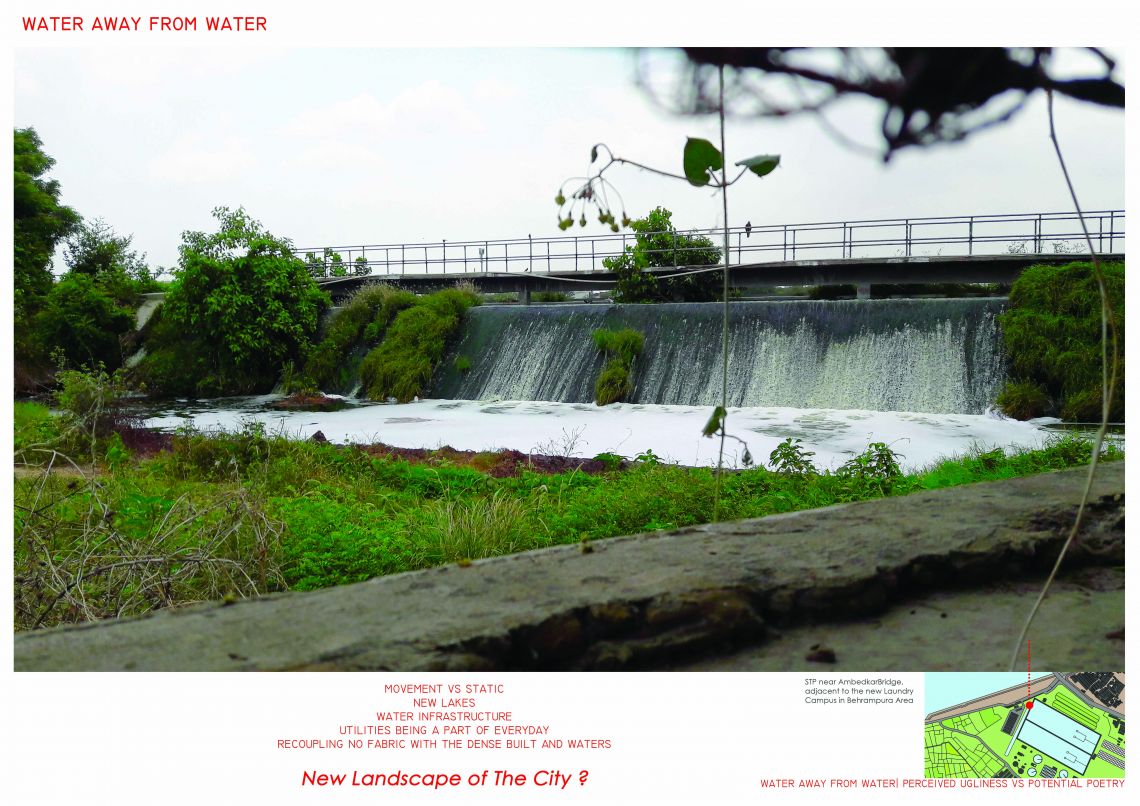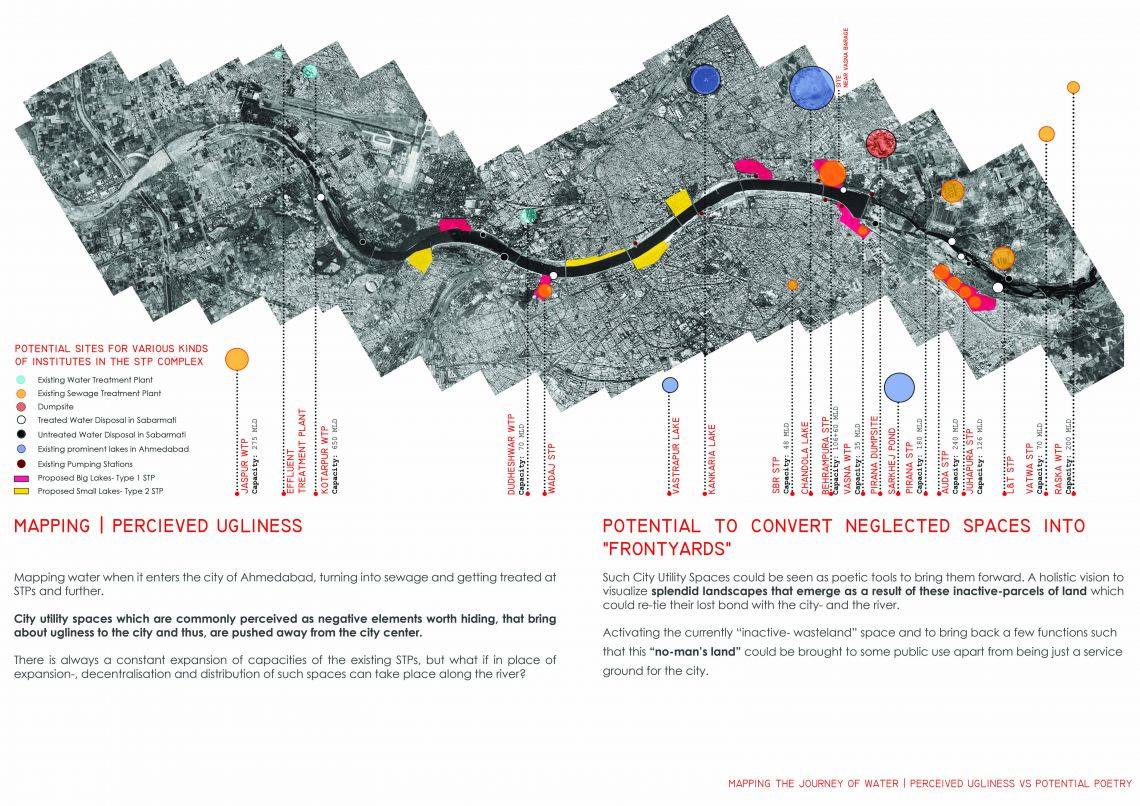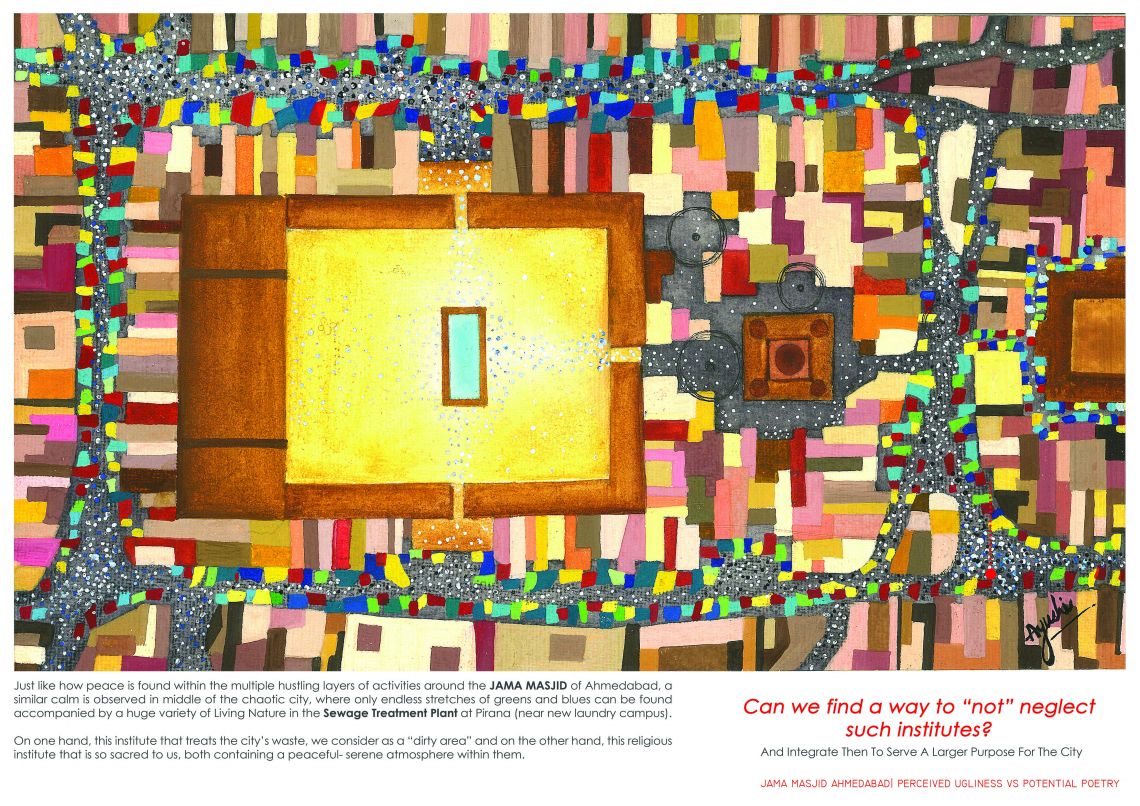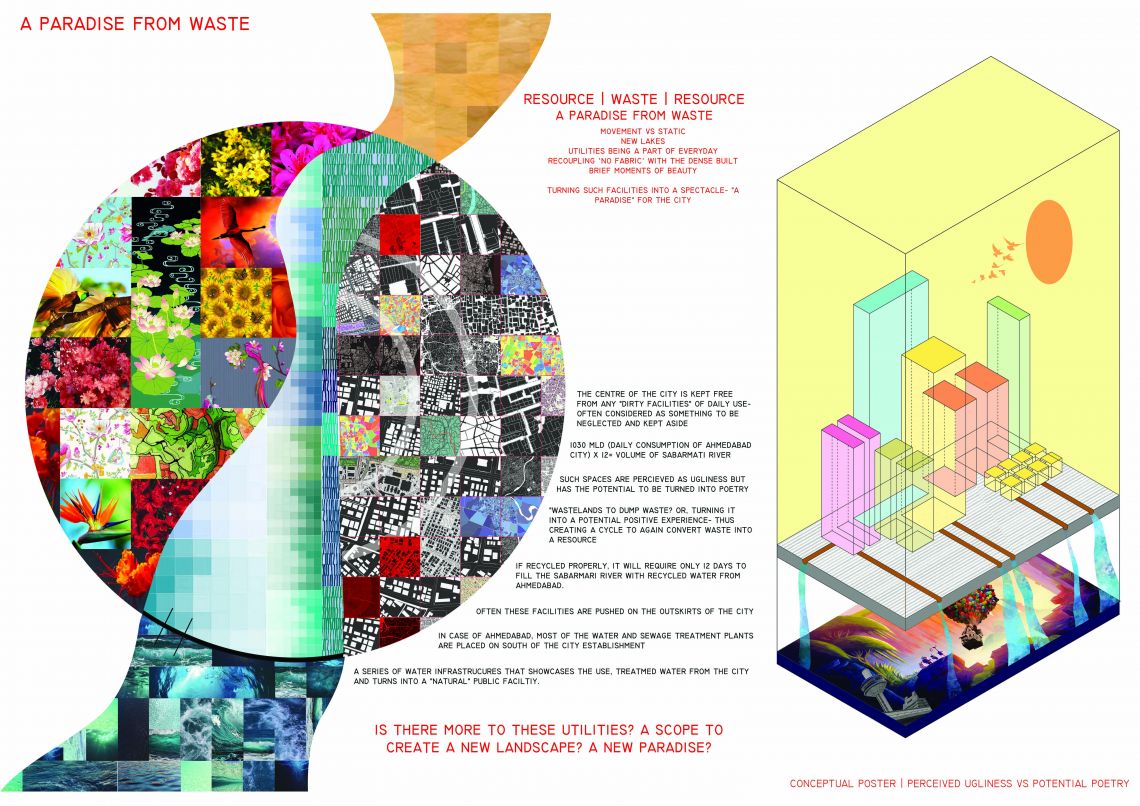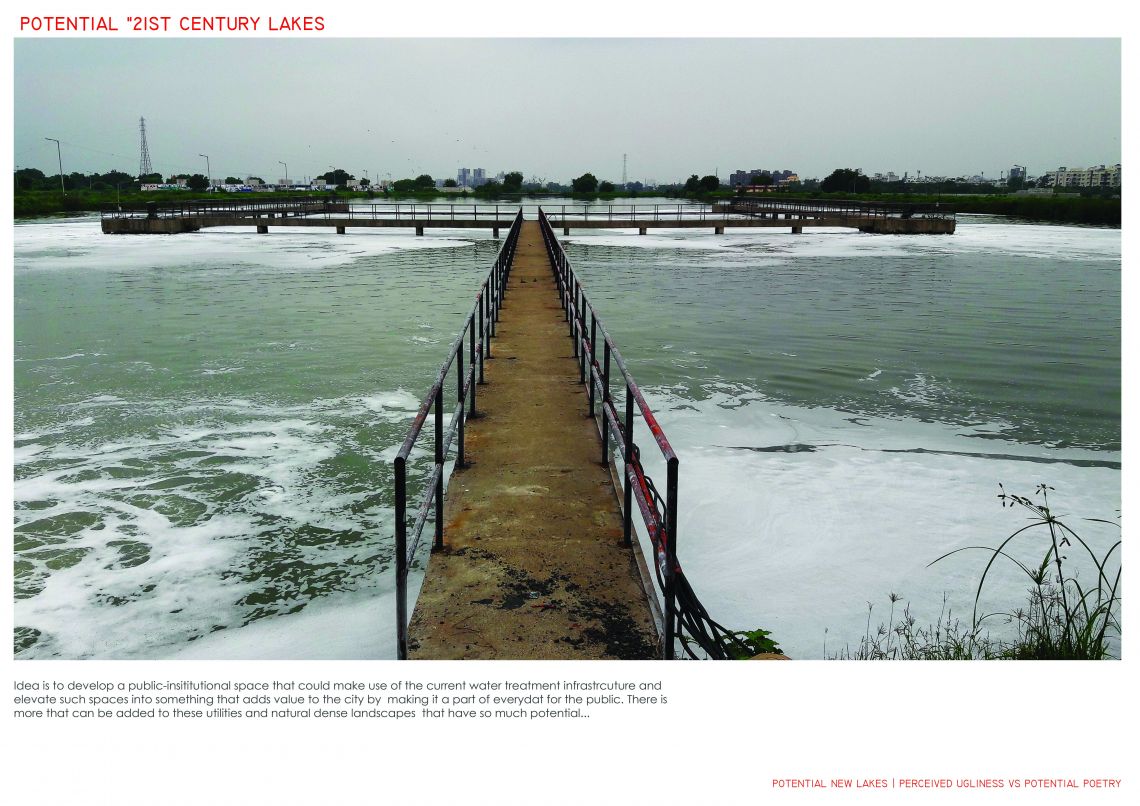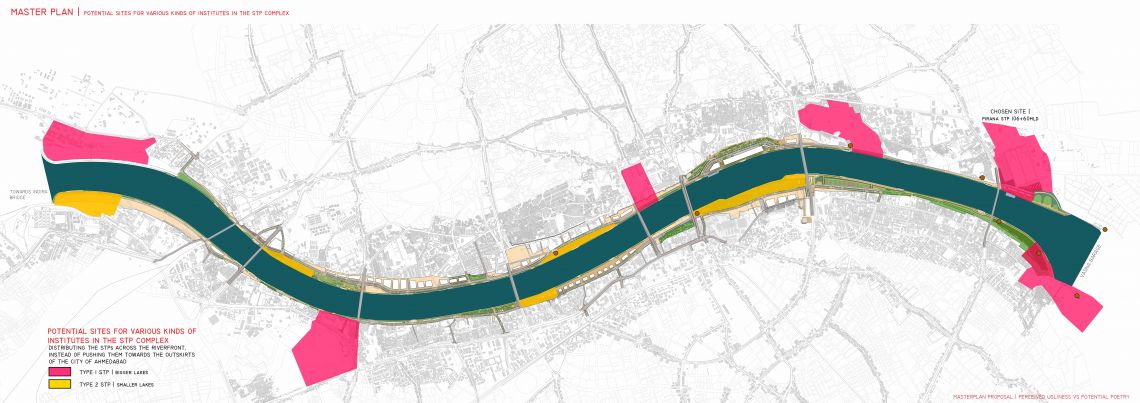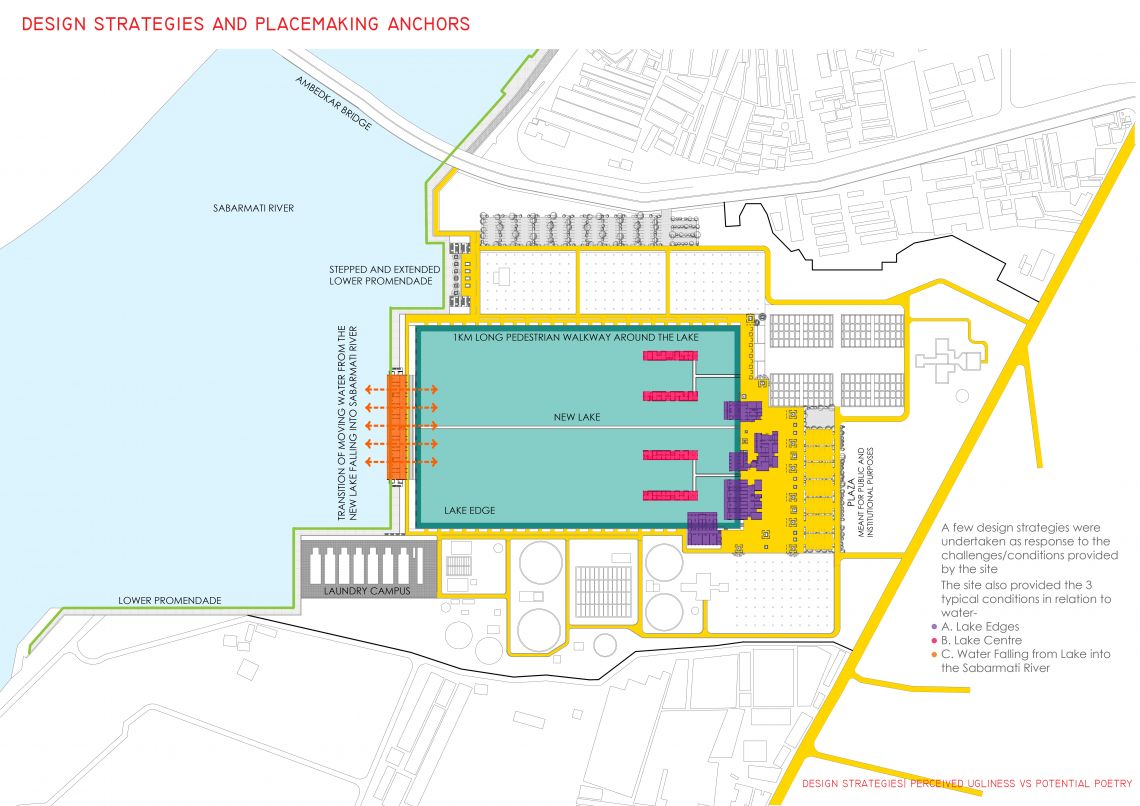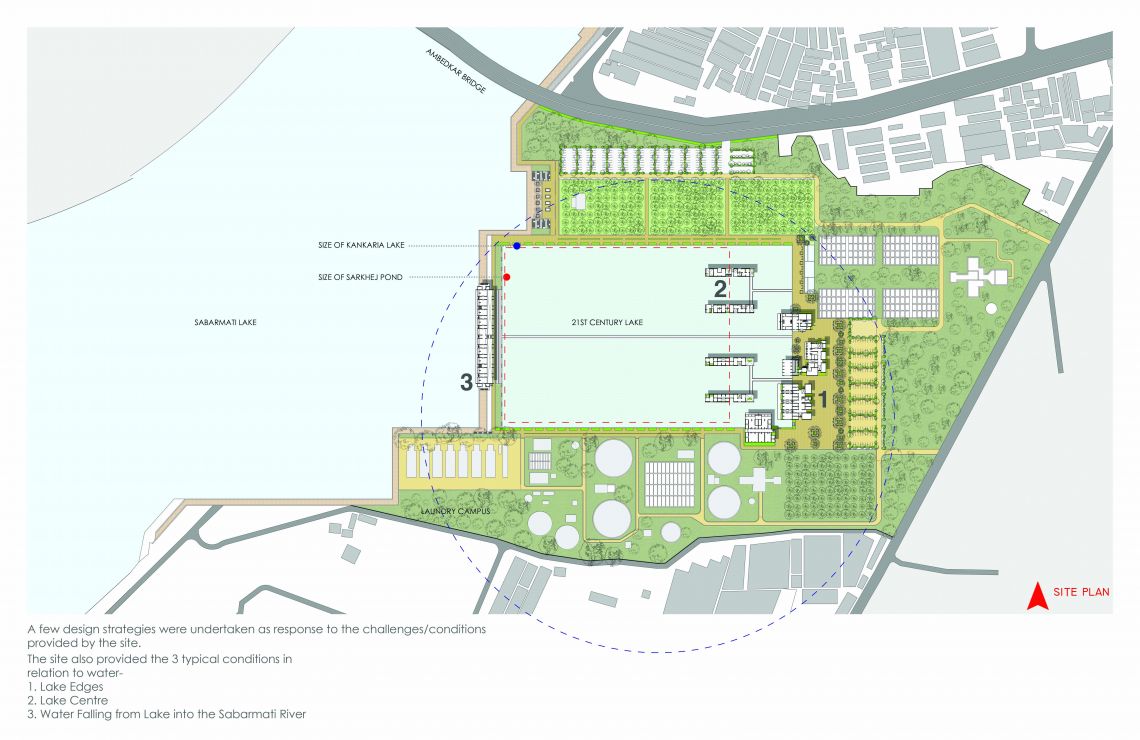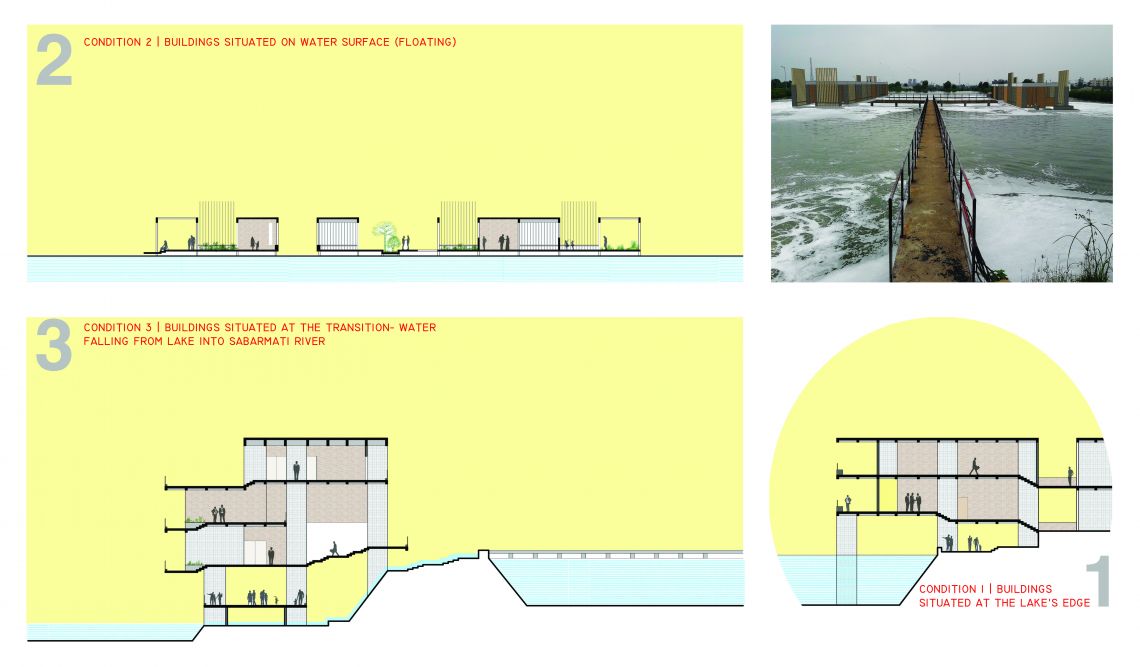Your browser is out-of-date!
For a richer surfing experience on our website, please update your browser. Update my browser now!
For a richer surfing experience on our website, please update your browser. Update my browser now!
City utility spaces in Ahmedabad as well as in other cities, are commonly perceived as elements that bring about ugliness to the city could potentially be seen as poetic tools to bring them forward and make them as city front yards. Reconnecting them (water and sewage treatment plants) with the Sabarmati River as a spectacle that joins both these entities as one. Providing the public with an opportunity to experience them rather than being pushed on the edges of cities which we currently are unaware of.
A holistic vision to visualize splendid landscapes that emerge as a result of these inactive-parcels of land which could re-tie their lost bond with the city- and the river.
The static waters in the city utility spaces stand as new definition of 21st century “lakes”-Extending these new lakes towards the river, by using the treated water to fill up the larger body i.e. Sabarmati. Tracking this movement of water would potentially deliver a positive experience of something that is seen as utility/ ugliness- making them strong placemakers would bring about a drastic change in how such spaces are considered as negative elements worth hiding. These hidden activities having a huge potential can turn Sabarmati Riverfront into a project that is one of its own kind. The vision is to add layers of new connections- and incorporating existing features as anchors of placemakers, as well as reconnecting the river with the people and the city even when the water recedes back, thus altering the behavior of river and riverfront.
NO-MAN’S LAND AS THE SERVICE GROUND FOR THE CITY
RECONNECTING THE WATER AWAY FROM WATER
STORAGE AND MOVEMENT OF WATER
THERE IS MORE THAT CAN BE ADDED TO THESE UTILITIES & LANDSCAPES…
An approach to connect the city fabric with waste-dumping lands, while maintaining its existing function which will remind people of their daily consumption of resources on a daily basis along with providing a whole new dimension in how we perceive waste disposal lands. Introducing a new kind of nature that maintains a strong relationship with the river and other natural and other existing forms.
For example, reconnecting the waterfall (component of sewage treatment plant) and the laundry campus with the river itself, this would also add a new pleasant layer of experience for the public, by even making it more visible to public or by providing some recreational space around it, along with adding new functions also.
Activating the currently “inactive- wasteland” space and to bring back a few functions such that this “no-man’s land”could be brought to some public use apart from being just a service ground for the city. Encouraging these placemakers would help create an experience for the users. The newer development will also aim at creating a space for everyday use of public, which is not just for walking or sitting but also including various other functions that have a potential to be carried out on the riverfront.
The constant negotiation of public with the overflowing or receding river throughout the year will re-tie their lost bond, specially when they opportunities are provided to people to move forward and backward with the movement of water. This constant transition of landscape will always keep the riverfront alive and never static.
